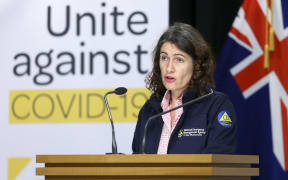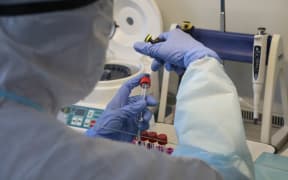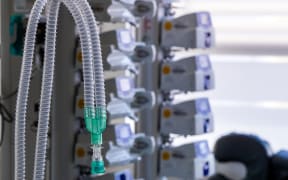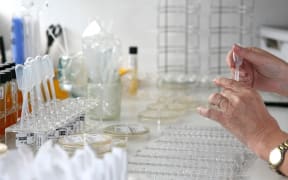Caring for a person in a critical condition with Covid-19 is a high-stress situation that requires the right equipment and training. RNZ went to investigate what that process is like...
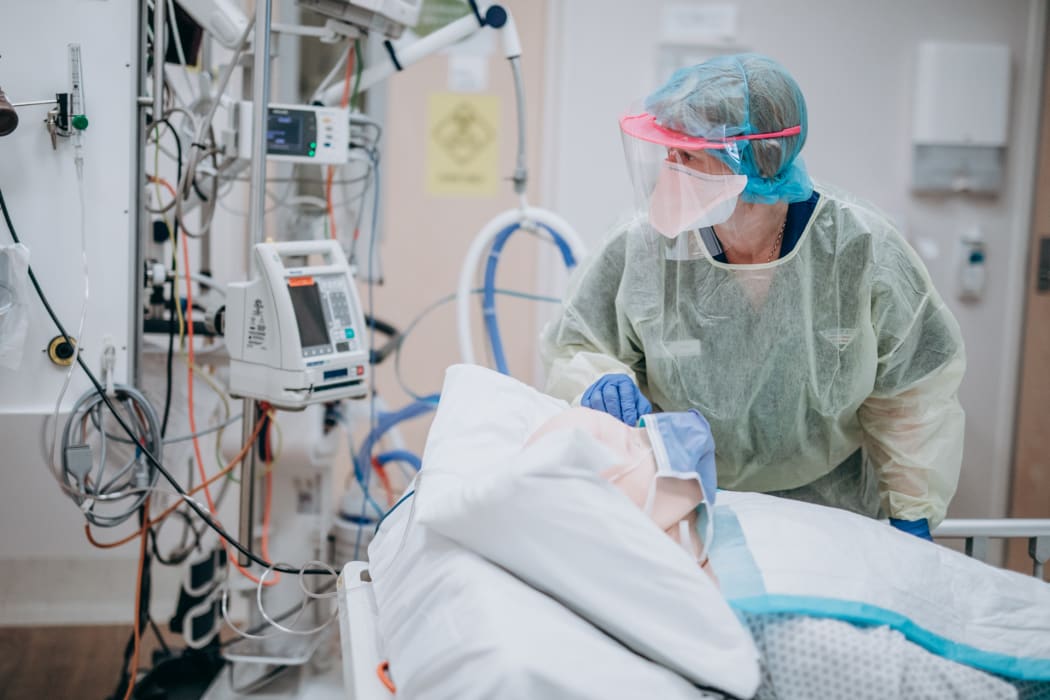
Health workers take part in ICU training for Covid-19 at Hutt Hospital. Photo: RNZ / Dom Thomas
First Person - It's called the "donning room" - a tiny claustrophobic cell with a sink and rubbish bin, next to the negative pressure room where a critically-ill, highly-infectious patient awaits care.
Clinical nurse manager Susan Cartmell explains there is a very specific order for putting on PPE (personal protective equipment) and taking it off again, a process known as "donning and doffing".
It sounds a bit like I should be popping on a top hat and kid gloves, but this is cutting-edge technology.
After covering my hair and shoes, there's a gown in a fetching hue of yellow.
Then, the mask - shaped a bit like a beak - which must be completely sealed around the nose and mouth, then a visor or mask to stop droplets spraying in my eyes.
Gloves go on last.
Oh, and in between each step, we have to wash and dry our hands.
Once fully garbed, it's really hot.
Cartmell says apart from the mask, this PPE is standard issue for intensive care staff looking after patients with infectious diseases.
"We're just having to make sure people have lots of breaks because you can get really over-heated and dehydrated.
"So it's not changing how we nurse, it's just changing how many patients will require us to wear this PPE gear."
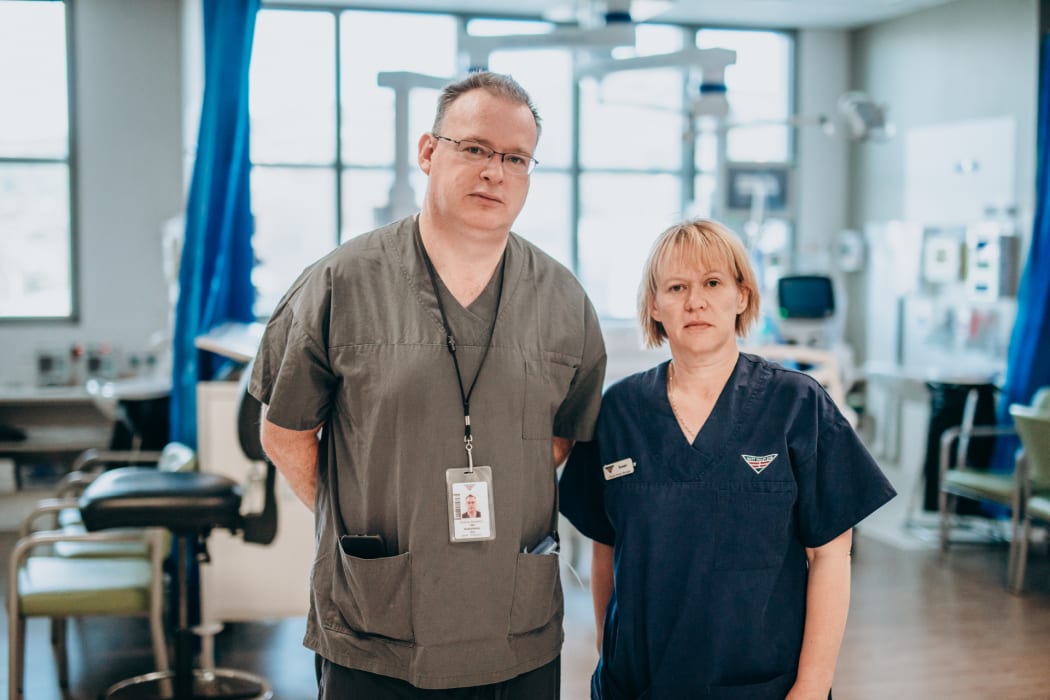
Hutt Hospital ICU director Andrew Stapleton and clinical nurse manager Susan Cartmell. Photo: RNZ / Dom Thomas
ICU director Andrew Stapleton says Hutt Hospital has had this training unit set up for a week, and is cycling through staff from different departments, who may be needed in intensive care.
Another simulation suite is set up in the operating theatre - now that elective surgery is on hold - so staff can train there on how to operate on a patient who is infected with Covid-19.
"So there's a bit of nervous anticipation, wondering what's going to occur.
"We're still hoping of course that we won't need any of this preparation, but we've got to plan for the worst, and that's what we're doing."
Now we're in the room with the "patient": a creepily realistic dummy which breathes and can groan, scream and even have seizures.
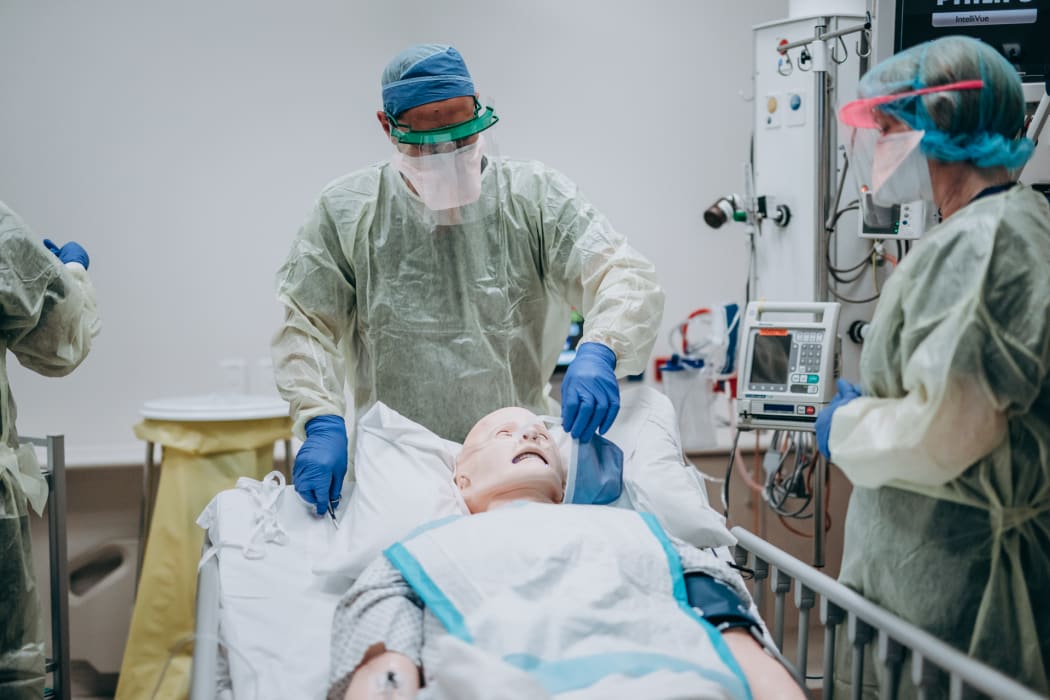
Photo: RNZ / Dom Thomas
Its oxygen levels start dropping and Cartmell hits the emergency alarm.
"It's quite an ominous sound if you work in an intensive care unit, and this will get a very quick response of everyone we need," Dr Stapleton says.
There is a flurry of activity on the other side of the glass wall, with doctors and nurses gathered around a trolley.
They have to make sure they have everything they need, because once they are in the room, they can't duck out again if they forget something. That process takes about four and a half minutes.
Next, a doctor and nurse go into the donning room to put on the PPE, all the while talking through the intercom with the nurse, who's setting up the ventilator and reassuring the patient.
"Although our dummy is staying nice and still, a real patient would be feeling very anxious. They will be breathing quickly, sometimes they can get confused and thrash around the bed, and the stress level in the room can be quite high."
It's a life and death situation - but staff can't rush in or they will risk being exposed to Covid-19 and having to be stood down.
"Look at the West Coast, you've got 25 nurses in isolation there from one patient - that would be the entire ICU staff for the Hutt."
Ten minutes after the alarm sounded, a doctor and assistant nurse enter with intubation equipment.
The most dangerous time for clinical staff is when they're putting the breathing tube in, Dr Stapleton says.
"We don't want Covid particles to be flying up into the air around."
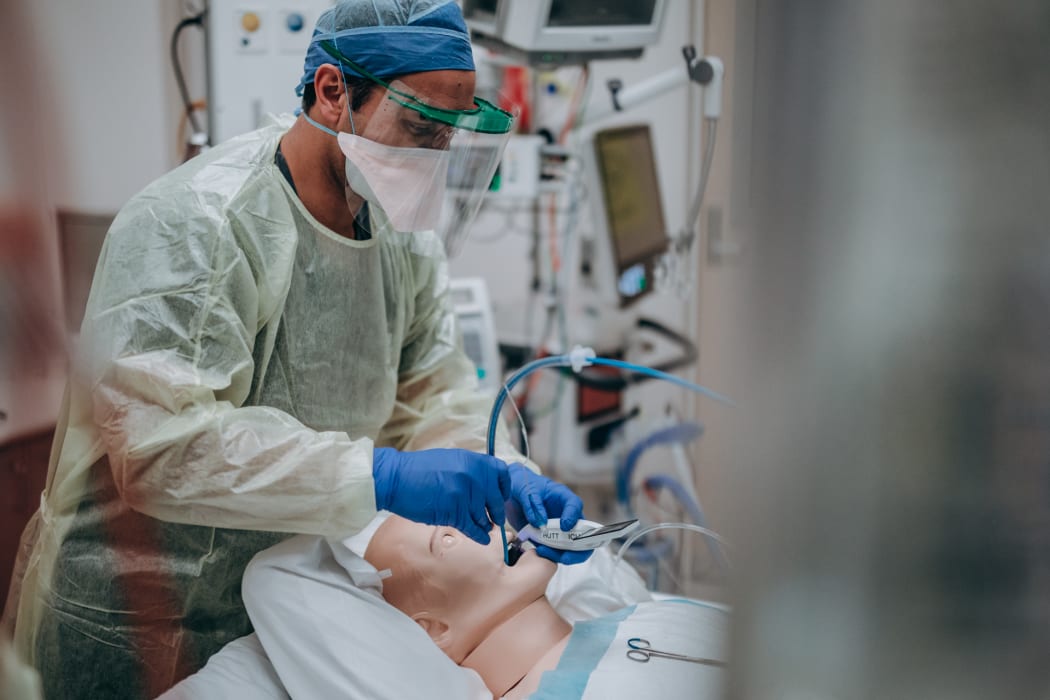
Intubation, when the breathing tube is put in, poses the most risk of Covid-19 exposure for health staff in ICU. Photo: RNZ / Dom Thomas
Dr Stapleton, the current chair of the New Zealand committee for the College of Intensive Care Medicine, helped develop the special protocols the team is using in this simulation, which have now been adopted internationally.
The doctor takes out the nasal tubes and puts a mask on the patient, and holds it in place so none of the high-pressure oxygen escapes.
About three minutes later, a second doctor enters the room with another trolley of equipment.
He reads from a checklist to ensure everything is being done in the correct order, then gives the patient a drug to put him to sleep and another that will stop him breathing.
This is so he doesn't cough all over the doctor while the breathing tube is going in, Dr Stapleton explains.
Then we all wait a full minute to ensure the drugs are working.
"So this is the real pressure of this situation because the patient is going to have low oxygen saturation levels by the time the breathing machine is connected, leaving little room for error - which is why we've been so fastidious in our checklist before this.
The doctor turns off the oxygen and uses a special scope with a video camera on it to guide the tubing past the vocal cords. Once it's in, the breathing tube goes on top.
Finally, the white line on the monitor measuring CO2 levels starts to form little peaks at regular intervals and the team knows intubation is successful.
The patient is in a drug-induced coma and breathing through the machine.
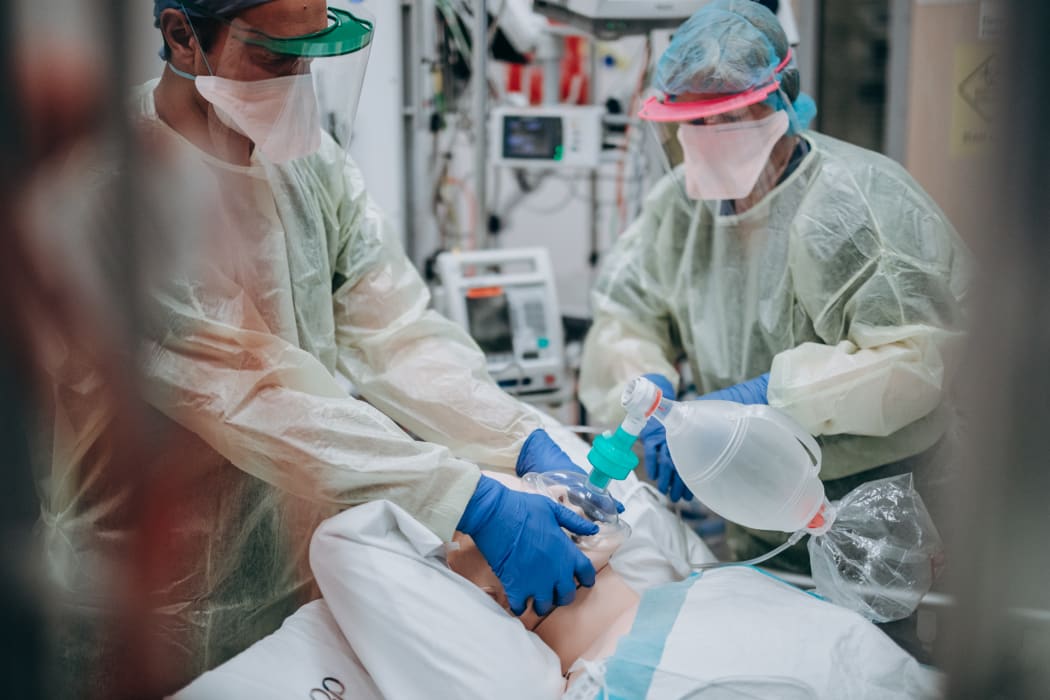
Photo: RNZ / Dom Thomas
Then it's time to traipse through to the doffing room and take off our PPE.
This is an even tricker process because it's now covered in virus and has to be peeled off in the right order so no part of our skin or clothing comes into contact with the outside of the gear.
Hutt Hospital can usually care for two patients on life-support, but is building extra capacity including converting the old ICU - which had been turned into offices - back into a working unit.
"In exceptional circumstances, using every resource possible we think we could flex up to 15, which is quite a significant increase obviously, and chimes with what we've said nationally about increasing ICU capacity by three or four times."
Dr Stapleton says such an arrangement would hard to sustain for long periods, and he and the rest of the health system are hoping they won't have to.
Read more about the Covid-19 coronavirus:
- See all RNZ Covid-19 news
- Government clarifies essential services during lockdown
- Covid-19 alert system: What you need to know
- Covid-19 symptoms: What they are and how they make you feel
- Touching your Face: Why do we do it and how to stop
- Scientific hand-washing advice to avoid infection
- The Coronavirus Podcast

